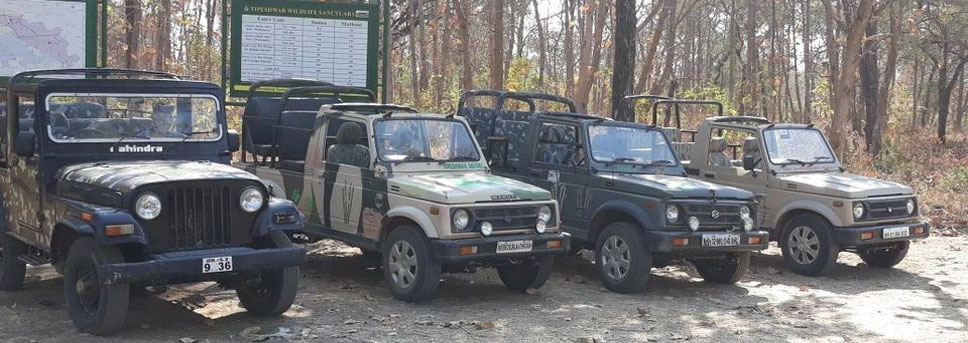How to Plan a Tipeshwar Tour
Tipeshwar Wildlife Sanctuary is located in the Yavatmal district of Maharashtra. It is a lesser-known location but a priceless destination for wildlife enthusiasts, offering a tranquil escape into nature's embrace. Tipeshwar Wildlife Sanctuary is home to a wide variety of flora and fauna, with tigers being the star attraction. Tipeshwar provides an ideal setting for those looking to experience wildlife in a less crowded and serene environment. Although the wildlife sanctuary is a lesser-explored hidden gem, it houses a notable population of Royal Bengal tigers along with other animals.
The step-by-step mentioned below is for organised planning for a trip to Tipeshwar Wildlife Sanctuary, which aims to assist experienced travellers as well as first-time visitors.

Step 1: Determine the Best Time to Visit
The optimal time to visit Tipeshwar Wildlife Sanctuary is between October and March, that is, from autumn to spring. During this period, the weather is cooler, and the chances of spotting wildlife, especially tigers, are significantly higher. The sanctuary is closed during the monsoon months, from July to September, due to heavy rains and water-logging.
Step 2: Sketch an Itinerary
Determine the number of days you plan to spend at the sanctuary, considering the travel time required for both arrival and departure. It is essential to allocate adequate time for various activities, such as wildlife safaris, nature walks, and visits to nearby attractions. Thoughtful planning will ensure that you have sufficient opportunity to fully experience the sanctuary and its surroundings without feeling hurried. Typically, a stay of two days is sufficient to explore the wilderness of Tipeshwar Wildlife Sanctuary comprehensively.
Step 3: Plan Your Route and Transportation
Tipeshwar Wildlife Sanctuary is well-connected by road. The nearest major cities are Nagpur (about 172 km away) and Adilabad (about 60 km away). The closest railway station is Adilabad, and the nearest airport is Dr. Babasaheb Ambedkar International Airport in Nagpur. Whether commuting by train or flight, you can hire a cab or rent a vehicle to reach the sanctuary.
Step 4: Research Safari Zones
Tipeshwar is divided into three zones for wildlife safaris, namely, Kodari, Mathani and Sunna. It is advisable to research these zones in advance. The safari zones of Tipeshwar are not particularly designated as core or buffer zones. The spotting of wildlife is almost the same in all three zones.
Step 5: Make Safari Bookings in Advance
Jeep safaris are the best way to explore the sanctuary. It is highly recommended to book the safari in advance, as there is limited availability, especially during peak seasons. These safaris can be booked online in advance to avoid their unavailability at the eleventh hour. Advance booking also provides the opportunity to select a jeep safari in the preferred zone and in the preferred time slot.
Step 6: Choose Your Accommodation
Accommodation options near Tipeshwar Wildlife Sanctuary are limited, with most hotels and resorts located some distance from the sanctuary. Therefore, it is advisable to secure your lodging well in advance to ensure availability and a more convenient stay.
Step 7: Pack Essentials for Your Safari
Packing appropriately is crucial, especially while planning for a wildlife safari. The packing essentials must include suitable clothing and footwear, based on the season. The list also encompasses binoculars for better wildlife viewing, and a camera to capture memorable moments. Don’t forget to carry insect repellants, sunscreen, hats, water bottles and some medicines to stay safe and healthy during the safari.